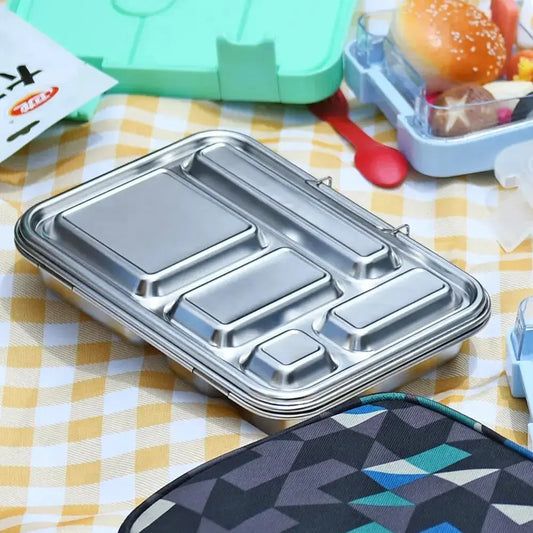10 Reasons Why Silicone Baking Mats Are a Game Changer for Every Home Baker
Every home baker knows the joys of creating delicious treats, but the clean-up can often be a sticky situation. Enter silicone baking mats—your new best friend in the kitchen! These flexible, non-stick wonders are revolutionizing the art of baking, transforming not just the way you prepare your Favorite recipes, but also how you manage the mess. Say goodbye to greasing pans and wasting parchment paper; silicone mats offer a reusable, eco-friendly solution that saves you time and money.
Whether you’re whipping up cookies, roasting vegetables, or crafting delicate pastries, silicone baking mats provide an even baking surface that ensures perfect results every time. In this article, we’ll explore ten compelling reasons why these mats are a game changer for home bakers everywhere. Get ready to elevate your baking experience and discover how these simple tools can make a world of difference in your kitchen!
The Benefits of Using Silicone Baking Mats
Silicone baking mats have become a staple in many home kitchens, and for good reason. These mats offer a multitude of benefits that elevate the baking experience, making them an essential tool for both amateur and professional bakers alike. One of the most notable advantages of silicone baking mats is their non-stick surface. This feature ensures that your baked goods release effortlessly, without the need for additional fats or oils. This not only promotes healthier baking but also preserves the integrity and appearance of your creations.
Another significant benefit of silicone baking mats is their durability. Unlike parchment paper or aluminium foil, which are often single-use items, silicone mats are designed to withstand repeated use. Made from food-grade silicone, these mats can endure high temperatures, typically up to 480°F (250°C), without warping or melting. This resilience means that a single silicone mat can replace countless sheets of parchment paper over its lifetime, offering substantial cost savings and reducing waste.
In addition to their non-stick and durable properties, silicone baking mats also provide an even heat distribution. This ensures that your baked goods cook uniformly, preventing the common issue of uneven browning. Whether you're baking cookies, bread, or pastries, you can trust that your treats will come out perfectly every time. The even heat distribution is particularly beneficial for delicate items like macarons or meringues, which require precise temperature control to achieve the desired texture and consistency.
How Silicone Baking Mats Enhance Baking Performance
Silicone baking mats are designed to enhance your baking performance in several ways, making them a game changer for any home baker. One of the key aspects is their ability to provide a consistent baking surface. Traditional baking sheets can sometimes cause hotspots, leading to uneven baking. Silicone mats, however, create a uniform barrier between the baking sheet and your food, promoting even heat distribution and eliminating hotspots. This results in perfectly baked goods, free from burnt edges or undercooked centres.
Another way silicone baking mats improve baking performance is through their superior non-stick properties. Unlike traditional greasing methods, which can be messy and inconsistent, silicone mats offer a reliable non-stick surface that ensures your baked goods release effortlessly. This is particularly beneficial for delicate items such as cookies, pastries, and meringues, which can easily break or lose their shape if they stick to the baking surface. With silicone mats, you can confidently bake even the most delicate treats without worrying about them adhering to the pan.
Additionally, silicone baking mats can help regulate the baking temperature, ensuring a more consistent cooking environment. The mats act as an insulator, preventing the direct transfer of heat from the baking sheet to the food. This can help prevent over-browning on the bottom of your baked goods and promote a more even bake. For items like bread and pizza, this can result in a perfectly crisp crust while maintaining a soft, tender interior. By using silicone baking mats, you can achieve professional-level results in your home kitchen, making every baking Endeavor a success.
Cost-Effectiveness of Silicone Baking Mats
When considering the investment in kitchen tools, cost-effectiveness is a crucial factor. Silicone baking mats offer exceptional value for money due to their durability and reusability. Unlike disposable parchment paper or aluminium foil, which need to be purchased repeatedly, a single silicone mat can be used hundreds of times. This translates to significant cost savings over time, as you no longer need to continuously buy disposable baking liners. The initial investment in a high-quality silicone mat pays off quickly, making it a practical and economical choice for any home baker.
Moreover, silicone baking mats can also save you money by reducing the need for additional baking supplies. For instance, the non-stick surface of silicone mats eliminates the need for greasing pans with butter, oil, or non-stick sprays. Over time, these small savings add up, further increasing the cost-effectiveness of silicone mats. Additionally, because silicone mats help ensure even baking and prevent burnt or undercooked spots, you are less likely to have to discard failed baking attempts. This not only saves money but also reduces food waste, making silicone mats an environmentally friendly option.
Furthermore, investing in silicone baking mats can extend the lifespan of your baking trays and sheets. The mats act as a protective barrier, preventing direct contact between the food and the baking surface. This helps to prevent scratches, stains, and build-up of baked-on residue, which can deteriorate the quality of your baking sheets over time. By using silicone baking mats, you can keep your baking trays in better condition for longer, avoiding the need for frequent replacements and further enhancing the overall cost-effectiveness of your baking equipment.
Environmental Impact: Reusable vs. Disposable Options
One of the most compelling reasons to switch to silicone baking mats is their positive environmental impact. Disposable baking liners, such as parchment paper and aluminium foil, contribute to significant waste. Each time you bake, you use a new sheet, which is then discarded after a single use. Over time, this practice generates a considerable amount of waste, contributing to landfill accumulation and environmental degradation. In contrast, silicone baking mats are reusable, reducing the need for disposable liners and significantly cutting down on waste.
Silicone baking mats are made from food-grade silicone, a material known for its durability and longevity. A single silicone mat can replace hundreds, if not thousands, of sheets of parchment paper over its lifespan. This substantial reduction in disposable liner usage translates to fewer trees being cut down for paper production and less energy consumed in the manufacturing and transportation of disposable products. By choosing silicone mats, you are making a conscious decision to reduce your carbon footprint and promote a more sustainable baking practice.
Additionally, silicone baking mats are easy to clean and maintain, further enhancing their environmental benefits. Unlike parchment paper or aluminium foil, which are single-use items that end up in the trash, silicone mats can be washed and reused countless times. This not only reduces waste but also conserves resources used in the production of disposable liners. By incorporating silicone baking mats into your kitchen routine, you are taking a proactive step towards an eco-friendlier lifestyle, demonstrating that small changes in our daily habits can have a significant positive impact on the environment.
Easy Cleanup: A Baker's Dream
One of the most appreciated benefits of silicone baking mats is the ease of cleanup they offer. Traditional baking methods often involve greasing pans or using parchment paper, both of which can leave a sticky residue or crumpled paper to deal with after baking. Silicone baking mats, on the other hand, provide a non-stick surface that simplifies the cleanup process. Baked goods release effortlessly from the mat, leaving behind minimal residue, which can be easily wiped away with a damp cloth or rinsed under running water.
The non-stick properties of silicone baking mats mean that you can say goodbye to the tedious task of scrubbing baking sheets. Burnt-on residue and stubborn stains are a thing of the past, as the silicone surface prevents food from adhering to the mat. This not only saves you time and effort but also helps maintain the quality of your baking sheets, as they are no longer subjected to abrasive scrubbing. For busy home bakers, the reduced cleanup time allows for more time spent enjoying the fruits of their Labor and less time spent on kitchen chores.
In addition to being easy to clean, silicone baking mats are also dishwasher safe. This adds another layer of convenience, as you can simply place the mats in the dishwasher along with your other kitchen items. The mats come out clean and ready for their next use, making the cleanup process even more effortless. For those who prefer hand washing, a gentle scrub with soapy water is all that's needed to keep the mats in pristine condition. The ease of cleanup provided by silicone baking mats truly makes them a dream come true for any home baker, transforming baking from a labour-intensive activity into a more enjoyable and efficient experience.
Versatility in the Kitchen: Beyond Baking
Silicone baking mats are not just limited to baking cookies and pastries; their versatility extends far beyond the traditional baking uses. One of the most popular alternatives uses for silicone mats is roasting vegetables. The non-stick surface ensures that vegetables cook evenly and do not stick to the pan, allowing for easy flipping and turning. This results in perfectly roasted vegetables with a crispy exterior and tender interior, without the need for added oils or sprays.
Another innovative use for silicone baking mats is in candy making. The heat-resistant properties of silicone make it an ideal surface for working with melted sugar and chocolate. Whether you're making homemade brittle, toffee, or chocolate bark, the non-stick surface of the silicone mat allows for easy spreading and cooling of the candy. Once the candy has set, it can be effortlessly removed from the mat without breaking or sticking, ensuring that your sweet creations maintain their desired shape and texture.
Silicone baking mats can also be used as a surface for kneading and rolling dough. The non-stick properties prevent dough from sticking, making it easier to work with and reducing the need for additional flour. This is particularly beneficial for tasks such as rolling out pie crusts, pizza dough, and bread dough. The mats provide a clean and consistent surface, ensuring that your dough is evenly rolled and shaped. Additionally, silicone mats can be used as a protective surface for working with messy ingredients, such as icing and fondant, making cleanup a breeze and keeping your countertops clean and organized.
Choosing the Right Silicone Baking Mat
When it comes to selecting the right silicone baking mat, there are several factors to consider to ensure you get the best product for your needs. One of the most important aspects is the quality of the silicone used in the mat. High-quality silicone mats are made from food-grade silicone, which is safe for use with food and free from harmful chemicals such as BPA. It's essential to choose a mat that is labelled as food-grade to ensure that it meets safety standards and is suitable for baking.
Another factor to consider is the size and thickness of the silicone baking mat. Silicone mats come in various sizes to fit different types of baking sheets, so it's important to choose a mat that fits your baking trays. Additionally, the thickness of the mat can affect its performance. Thicker mats tend to be more durable and provide better heat distribution, while thinner mats may be more flexible and easier to handle. Consider your specific baking needs and preferences when selecting the thickness of your mat.
Finally, it's worth looking into additional features that may enhance the functionality of the silicone baking mat. Some mats come with printed measurements and guidelines, which can be helpful for tasks such as rolling out dough to a specific size. Others may have textured surfaces that promote even air circulation, resulting in crispier baked goods. Take the time to explore the various options available and choose a mat that offers the features and benefits that align with your baking style and requirements.
Care and Maintenance Tips for Longevity
Proper care and maintenance are essential to ensure the longevity of your silicone baking mats. While these mats are designed to be durable and long-lasting, following a few simple guidelines can help keep them in optimal condition for years to come. One of the most important tips is to avoid using sharp objects on the silicone mat. Cutting or slicing directly on the mat can damage the non-stick surface and reduce its effectiveness. Always transfer your baked goods to a cutting board before slicing or use a plastic or silicone knife to avoid damaging the mat.
Another key aspect of maintaining your silicone baking mats is regular cleaning. After each use, it's important to clean the mat thoroughly to remove any food residue and prevent the buildup of oils and grease. While silicone mats are dishwasher safe, it's often recommended to hand wash them with warm soapy water for the best results. Use a soft sponge or cloth to gently scrub the mat, avoiding abrasive cleaners or scouring pads that could scratch the surface. Rinse the mat thoroughly and allow it to air dry before storing it.
Proper storage is also crucial for preserving the quality of your silicone baking mats. When not in use, store the mats flat or rolled up in a cool, dry place. Avoid folding or creasing the mats, as this can cause permanent damage to the silicone. If you need to stack multiple mats, place a sheet of parchment paper or a thin cloth between them to prevent them from sticking together. By following these care and maintenance tips, you can ensure that your silicone baking mats remain in excellent condition and continue to provide reliable performance for all your baking needs.
Conclusion: Why Every Home Baker Needs One
In conclusion, silicone baking mats are a game changer for every home baker, offering a multitude of benefits that enhance the baking experience. From their non-stick surface and durability to their even heat distribution and cost-effectiveness, silicone mats provide a reliable and efficient solution for all your baking needs. The environmental impact of reducing disposable liner waste and the ease of cleanup further highlight the advantages of incorporating silicone baking mats into your kitchen routine.
The versatility of silicone baking mats extends beyond traditional baking, allowing you to explore a wide range of culinary applications, from roasting vegetables to candy making and dough rolling. By choosing the right silicone baking mat and following proper care and maintenance guidelines, you can ensure that your mats remain in optimal condition and continue to deliver exceptional results for years to come.
Every home baker can benefit from the convenience, efficiency, and performance that silicone baking mats offer. Whether you're a seasoned baker or just starting out, these mats provide the perfect foundation for creating delicious and beautifully baked goods. Embrace the game-changing potential of silicone baking mats and elevate your baking experience to new heights.












0 comments